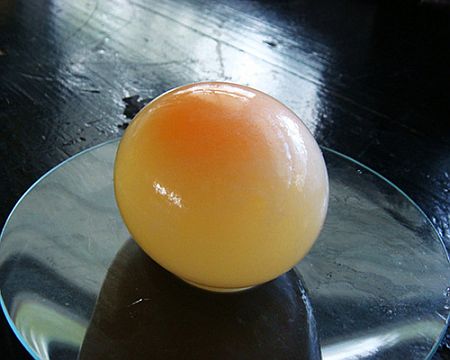A chicken egg with the shell removed is often used as a model to show how osmosis works – the experiment we did at Federation University, Ballarat, showed how the eggs gain or lose mass depending on the concentration of the solution that they are placed in. It is important to know that the membrane of the egg is not a true biological membrane or plasma membrane. In fact, a chicken egg is a very specialized cell and the membrane is actually composed of keratin fibres – the same protein that makes up human hair, finger nails and rhino horns. Thanks to Andrew Douch for finding this article about chicken egg membranes, with scanning electron micrograph images.
Notice in the image above, the egg in 5% saline solution sinks (indicating that the egg contents are more dense than the solution) and the egg in the 10% saline solution floats (indicating that the egg contents are less dense than the solution). This image should give you a clue as to which egg gains water and which egg loses water by osmosis.

